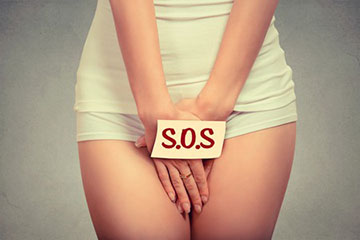What are varicose veins and spider veins? | How common are abnormal leg veins? | What causes varicose and spider veins? | Why do varicose and spider veins usually appear in the legs? | Are varicose and spider veins painful or dangerous? | How can I prevent varicose and spider veins? | Should I see a doctor about varicose veins? | How are varicose and spider veins treated? | Can varicose and spider veins return even after treatment?
Varicose Veins and Spider Veins
How are varicose and spider veins treated?
Besides a physical examination, your doctor can take x-rays or ultrasound pictures of the vein to assess the cause and severity of the problem. You may want to speak with a doctor who specializes in vein diseases (phlebology). You should discuss which treatment options are best for your condition and lifestyle. It is important to remember that not all cases of varicose veins are the same. Doctors may differ in the ways they treat you. Some available treatments or surgeries include:
- Sclerotherapy - Of all available treatments, this one is most commonly used for both spider veins and varicose veins. It involves injecting a solution into the vein that causes the lining of the vein walls to swell, stick together, and eventually seal shut. The flow of blood is stopped and the vein turns into scar tissue. In a few weeks, the vein should fade. Although the same vein may need to be injected with the solution more than once, sclerotherapy is very effective if done correctly. The American Academy of Dermatology states that most patients can expect a 50% to 90% improvement. Also, a new and improved type of sclerotherapy called microsclerotherapy uses improved solutions and injection techniques that increase the success rate for removal of spider veins. Sclerotherapy does not require anesthesia, and can be done in the doctor's office.
Some side effects may only occur at the site of the injection, such as stinging or painful cramps; red raised patches of skin, small skin ulcers, and bruises. Spots, brown lines, or groups of fine red blood vessels could appear around the vein being treated. These usually disappear. The treated vein could become inflamed or develop lumps of coagulated or congested blood. These are not dangerous. Applying heat and taking aspirin or antibiotics can relieve inflammation. Lumps of coagulated blood can be drained. Health insurance coverage varies. If the treatment is done for cosmetic reasons only, it may not be covered.
- Electrodesiccation - This treatment is similar to sclerotherapy except the veins are sealed off with an electrical current instead of the injection of solution. This treatment may leave scars.
- Laser surgery – Until recently, laser treatments mostly were used for treating spider veins on the face. Varicose veins in the legs did not respond consistently to this treatment, and some doctors doubted whether laser treatment actually worked, and it was not covered by most health insurance plans. Now, however, new technology in laser treatments can effectively treat varicose veins in the legs.
Laser surgery works by sending very strong bursts of light onto the vein that makes the vein slowly fade and disappear. Lasers are very direct and accurate, and only damage the area being treated. All skin types and colors can be safely treated with lasers. The American Academy of Dermatology believes that the new laser technology is more effective with fewer side effects. Laser surgery is more comfortable for patients because there are no needles or incisions. When the laser hits the skin, the patient only feels a small pinch, and the skin is soothed by cooling both before and after the laser is applied. There may be some redness or swelling of the skin right after the treatment, but this disappears within a few days. The skin also may be discolored, but this will disappear within one to two weeks. Treatments last 15 to 20 minutes, and depending on the severity of the veins, two to five treatments are generally needed to remove varicose veins in the legs. Patients can return to normal activity right after treatment.
There are several types of lasers that can be used to treat varicose veins and spider veins on the legs and face. Although your doctor will decide which type is best to treat your condition, some of the lasers used to treat veins include yellow light lasers, green light lasers, and other intense pulsed light systems. Again, health insurance coverage varies. If the treatment is done for cosmetic reasons only, it may not be covered.
- VNUS® Closure technique® – The U.S. Food and Drug Administration (FDA) in March 1999 approved this new procedure for use in the United States. Although it is not as widely used as sclerotherapy, some doctors feel it may become the standard for treating varicose veins. It is not very invasive and can be done in a doctor’s office. This method involves placing a special catheter or a very small tube into the vein. Once inside, the catheter sends radiofrequency energy to cause the vein wall to shrink and seal shut. Healthier veins surrounding the closed vein can then restore the normal flow of blood. As this happens, symptoms from the varicose vein decrease. The only side effect is slight bruising.
Surgery is used mostly to treat very large varicose veins. Available surgical options include:
- Surgical Ligation and Stripping - With this treatment, the veins are tied shut and completely removed from the leg. Removing the veins will not affect the circulation of blood in the leg because veins deeper in the leg take care of the larger volumes of blood. The varicose veins mostly removed through surgery are superficial or surface veins, and collect blood only from the skin. This surgery requires either local or general anesthesia and must be done in an operating room on an outpatient basis.
Serious side effects or complications with this surgery are uncommon. However, with general anesthesia, there always is a risk of cardiac and respiratory complications. Similar to the risks of sclerotherapy, bleeding and congestion of blood can be a problem, but the collected blood usually settles on its own and does not require any further treating. Wound infection, inflammation, swelling and redness also can occur. This surgery also can leave permanent scars. A very common complication is the damage of nerve tissue around the treated vein. Small sensory nerve branches are difficult to avoid when veins are removed. This damage can cause numbness in small areas of skin, burning, or a change in sensation around the surgical scar. The most serious, but rare, complication of surgery is the creation of a deep vein blood clot that may travel to the lungs and heart. To be safe, many surgeons give injections of heparin, a drug that reduces blood coagulation, for one to two days before the surgery. However, heparin also can increase the normal amount of bleeding and bruising after the operation.
- Ambulatory Phlebectomy - With this surgery, a special light source marks the location of the vein. Tiny incisions are made in the vein, and then with surgical hooks, the vein is pulled out of the leg. This surgery requires local or regional anesthesia. The vein usually is removed in one treatment. Side effects and complications are similar to those of ligation and stripping. The most common side effect is slight bruising. Compared to traditional surgery, ambulatory phlebectomy allows the removal of very large varicose veins while leaving only very small scars. Patients can return to normal activity the day after treatment.
What are varicose veins and spider veins? | How common are abnormal leg veins? | What causes varicose and spider veins? | Why do varicose and spider veins usually appear in the legs? | Are varicose and spider veins painful or dangerous? | How can I prevent varicose and spider veins? | Should I see a doctor about varicose veins? | How are varicose and spider veins treated? | Can varicose and spider veins return even after treatment?
Womenshealth.gov
http://www.4woman.gov






